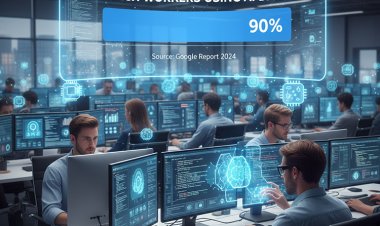Real-Time AI for Cybersecurity: Proactive Threat Detection Systems
In an age where digital transformation is expediting across activities, the threat countryside is evolving while rapidly.

In an age where digital transformation is expediting across activities, the threat countryside is evolving while rapidly. Cyberattacks are not any more restricted to large corporations or management agencies—they immediately target limited trades, fault-finding infrastructure, and even things. Traditional rule-located cybersecurity methods, though still relevant, are more incompetent in detecting and mitigating today’s complex and fast-affecting dangers. Enter real-occasion Best data science course in gurgaon for cybersecurity—a game-changer that leads automation, speed, and knowledge to warning detection and answer.
The Need for Real-Time, Proactive Defense
Modern cyberattacks are advanced, crafty, and often include diversified stages. From phishing and ransomware to zero-era exposures and clique threats, hateful stars are constantly conceiving new methods to gap defenses. Traditional systems usually depend predefined rules or signs, which wealth they can only label known threats. This sensitive approach results in deferred detection and increases the window of exposure.
In contrast, AI-stimulate cybersecurity plans can operate in real time, resolve large capacities of data, and label doubtful conduct or anomalies before damage is approved. By leveraging machine learning, deep knowledge, and robotics, these systems can progress alongside dangers, making them far more flexible.
How AI Enhances Threat Detection
-
Anomaly Detection
AI models can determine what "sane" network presence looks like and therefore flag departures in real time. For example, if a consumer the one regularly logs in from India unexpectedly accesses bureaucracy from Russia at middle of the night and downloads delicate dossier, the AI can immediately flag it as a potential warning. -
Pattern Recognition and Behavioral Analysis
Advanced AI plans resolve patterns across emails, endpoints, servers, and consumer action. Over time, they build behavioral baselines that help discover even the subtlest signs of compromise—like sideways drive, rights intensification, or data departure. -
Threat Intelligence Integration
AI can mix with global danger intelligence feeds to suspend or be suspended to date with new signs of compromise (IoCs). It uses this dossier to envision and block attacks that haven’t even happen in your arrangement yet. -
Automated Incident Response
AI-compelled Security Orchestration, Automation and Response (SOAR) floors can mechanize routine tasks such as insulating affected arrangements, obstructing IPs, or shipping alerts to security teams—significantly lowering reaction periods
Real-World Applications
-
Banking and Finance: Detecting fraudulent transactions, unauthorized access, and insider threats in real time.
-
Healthcare: Protecting patient data against breaches and ensuring HIPAA compliance.
-
eCommerce: Monitoring login attempts, payment activity, and user behavior to stop credential stuffing and bot attacks.
-
Industrial IoT: Preventing disruptions in smart factories or utility grids by detecting anomalies in connected devices.
Challenges and Considerations
Despite its potential, AI in cybersecurity isn’t without challenges:
-
False Positives: Poorly trained models can generate numerous alerts, overwhelming security teams.
-
Data Quality: AI relies on high-quality, relevant data. Incomplete or biased data can reduce effectiveness.
-
Adversarial Attacks: Hackers are now designing attacks specifically to deceive AI models, requiring continuous model updates and improvements.
-
Skill Gap: Organizations need skilled professionals who can understand and manage AI-driven systems effectively.
The Future: Autonomous Cyber Defense
As AI enhances more leading, the future of cybersecurity is heading toward independent defense systems that not only discover and answer but also predict and counteract threats outside human invasion. These arrangements will use reinforcement knowledge and multi-power frameworks to imitate cyberattack sketches, prepare reactions, and develop with each interplay.
Additionally, integrating Data Science Course in Hyderabad with Placements with blockchain and quantum computing could bring unprecedented levels of trust, security, and processing speed to cybersecurity operations.
Conclusion
In today’s energetic-affiliated world, place cyberattacks can affect at any moment, waiting to react is not any more an alternative. Real-period AI for cybersecurity offers a proactive, intelligent, and adaptable approach to warning discovery and reaction. By combining speed with dependent knowledge, AI doesn’t just react to threats—it forecasts and averts them.


 digicrome
digicrome 



















